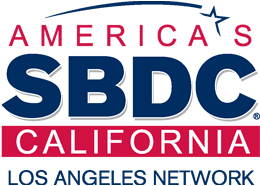Thinking of starting a business? Whether it’s home-based, retail, technology related, or not, start by reviewing some of the most common steps and resources for starting your business below. Remember to review the LA SBDC calendar for monthly workshops on a large array of startup topics.
-
Assess the Viability of Your Idea. What is your idea – how can you best describe it? How big is the market? What is the demand? If your idea improves on an existing product or service, what makes your idea different? Research your potential market, understand what your customers want, review the potential competition big and small and assess where your business fits. Are there opportunities abroad? Is there a niche? Know your vision, develop a purpose and use it as your guide. For help with market information check out SizeUp, ask your local SBDC for free market data, or review this great business guide from Peter Jones.
-
Project Your Costs and Review Your Financing Options. Although, financial projections may seem daunting, projections help predict the financial health of a potential or existing business through analyzing costs, size of the market, prices, and other conditions. Your projections can assist you greatly with determining if you can move forward with your business; consider using our financial projections template and step-by-step guide. Then, if needed, assess the type, as well as the amount of financing you may need. If financing is needed, assure your projections match your funding requests, and your funding type matches your needs – long or short. Don’t forget to call your local SBDC advisor to walk you through your financial projections, financing options, and assist you with packaging your loan – at no cost. Check out our article on Inventive Financing Methods and Resources for Your Small Business.
-
Develop a Plan. Creating a plan is an important step to starting a business, some banks require a business plan for financing and it can even be required to lease space. To begin your plan development, consider starting with a free sample plan at sites like Bplans.com and reviewing our Business Plan Guide. Then, tailor the plan to suit your business.
-
Choose a Structure. Review business structure options and decide the best structure – Sole Proprietor, Partnership, LLC, Corporation, etc. Take your time choosing the right business structure and take into consideration cost, taxes, and potential liability. Contact a few local attorneys that focus on business formation and tax issues. Check out The Franchise Tax Board’s handout on forms of ownership for details about key features, filing guidelines, and tax forms for each ownership structure.
-
Check Your Name. Is your business name already taken? This will largely depend on the type of structure you choose- for LLCs and Corporations, check out the Secretary of State’s Business Name Search – http://kepler.sos.ca.gov for Sole Proprietors and Partnerships, look up your county’s Fictitious Business Name Search website – Los Angeles County. Also, check whether a domain related to your business name is available to create a website in the future. Search GoDaddy.com.
-
Setup Your Record-Keeping Systems. Setup your record-keeping systems to help manage your business and its growth. This is great time to review CRM, Accounting, and project management software. Check out this article on leveraging technology to think like the giants. Remember to create a new bank account to keep your personal and business accounts separate.
-
Understand Tax Obligations and Opportunities. Just about every tax agency has online publications and videos, many of which hold in-person workshops so you understand your tax obligations thoroughly. Try to also attend SBDC workshops like “Avoiding Tax Mistakes.” Aside from tax obligations, sometimes there are tax credit opportunities for your business too. California is currently in its second round of issuing “California Competes” tax credits; $75 million in credits are available this round and 25% of the total credits are allocated for small businesses. Click for a step-by-step guide on completing the application or navigate to upcoming informational workshops on the tax credit.
-
Limit Your Risk and Protect your Investments. Whenever possible, transfer major risks to insurance companies (e.g. insuring against major facility damage or injuries) or other suppliers (e.g. accounting firms, Payroll Services etc.). Review your business insurance options (Commercial Auto; General Liability, Product Liability; Professional Liability; etc.) with your insurance provider and assess the potential liabilities that may exist in your business; most personal policies will not cover business activities. Remember to review your warranties and those you issue, keep accurate records, and keep a close eye on your accounts receivables to manage cash flow effectively.
-
Look Before You Lease. You may need space to start your business, however, before your sign the lease consider reviewing our handout which covers many questions to ask your leasing agent about parking, zoning, permits, signage etc. Check with your local SBDC about special programs like KIMCO KEYS, which offers first-time business owners one-year free rent in their shopping centers and added benefits (terms apply).
-
Target and Market. You reviewed your potential customers when you began researching, now assess their behaviors and start marketing. Review how to target your marketing and attract customers, then choose the appropriate channels to start marketing to them. Marketing online can be an inexpensive start; consider email marketing through Mail Chimp or Constant Contact, managing social accounts with HootSuite or Sprout Social, and creating your website with tools like WordPress that are considerably more user-friendly to manage.
Special Thanks to: Sean Snider for his content contribution to this article. Sean is the Director of the SBDC hosted by
the University of La Verne. For more information about the ULV SBDC team visit www.lavernesbdc.org/about/staff.





